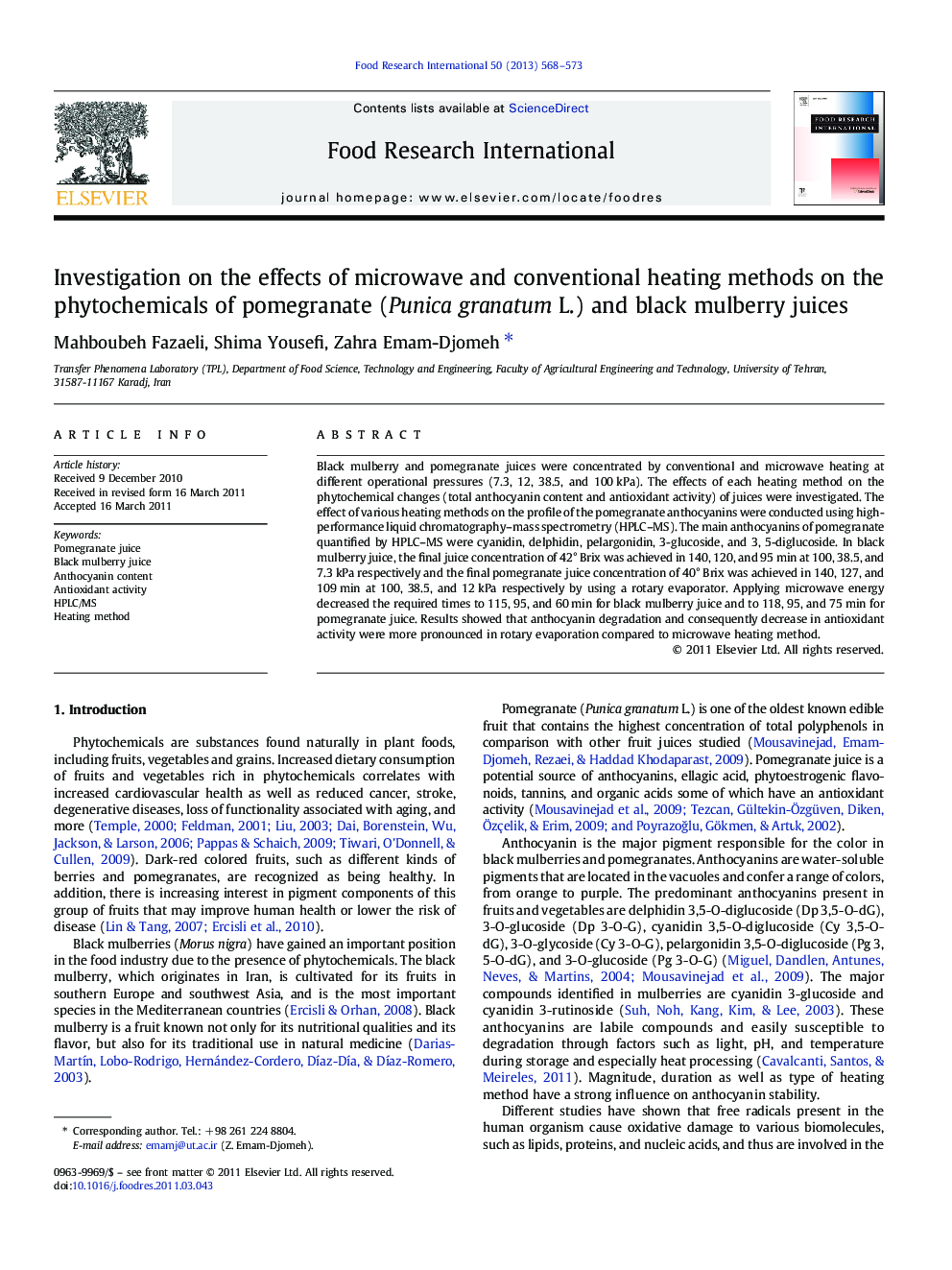| Article ID | Journal | Published Year | Pages | File Type |
|---|---|---|---|---|
| 6397589 | Food Research International | 2013 | 6 Pages |
Black mulberry and pomegranate juices were concentrated by conventional and microwave heating at different operational pressures (7.3, 12, 38.5, and 100 kPa). The effects of each heating method on the phytochemical changes (total anthocyanin content and antioxidant activity) of juices were investigated. The effect of various heating methods on the profile of the pomegranate anthocyanins were conducted using high-performance liquid chromatography-mass spectrometry (HPLC-MS). The main anthocyanins of pomegranate quantified by HPLC-MS were cyanidin, delphidin, pelargonidin, 3-glucoside, and 3, 5-diglucoside. In black mulberry juice, the final juice concentration of 42° Brix was achieved in 140, 120, and 95 min at 100, 38.5, and 7.3 kPa respectively and the final pomegranate juice concentration of 40° Brix was achieved in 140, 127, and 109 min at 100, 38.5, and 12 kPa respectively by using a rotary evaporator. Applying microwave energy decreased the required times to 115, 95, and 60 min for black mulberry juice and to 118, 95, and 75 min for pomegranate juice. Results showed that anthocyanin degradation and consequently decrease in antioxidant activity were more pronounced in rotary evaporation compared to microwave heating method.
